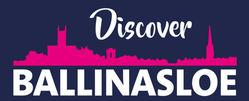|
by Bernard Larkin Retired Fire Station Commander Bernard Larkin a native of Derrymullen and residing in the village pens a warm recollection of winterime trips to town in the forties. “Go catch the pony “
The above order was gleefully received by many a young fellow in the 1940’s because it heralded a trip to town. Visits to town were few and far between in the 1940’s as it was War Time (Or the Emergency ) and money was scarce. Yet, certain tasks had to be done such as payment of rent and rates, (no electronic transfers in those days), so a trip to town was necessary a couple of times each year. Now to the pony, I think he had a good idea when those trips were due because he immediately moved to the furthest end of the field and had to be coaxed to the middle by a fistful of oats in a tin basin. This always did the trick. It is always an equine treat to have oats. The big tub trap was then pulled out and the pony fitted with his harness (nicely cleaned and polished) and we were ready for the road. The road itself deserving of a mention here for it was no shiny tarmacadam surface, but a loose sandy and sometimes potholed one. It was not until we reached about 3 miles from Town that a tarred road was encountered. In Winter, this presented a problem in frosty weather as there was an ever-present danger of the pony slipping and injuring himself or the passengers or breaking a shaft of the trap which would lead to an expensive visit to John Lyons who was a coach builder in Dunlo street. The slippage danger was countered by the fitting of the horseshoes with special frost nails which gripped the road surface and in later time, patent studs were used on the shoes. Having negotiated the long slope of Brackernagh, the next step was to find stabling for the pony. At that time most public houses had a few stables in the yard for their country customers, and over the years most people became regulars at their favourite pub/grocery, as most pubs had a small grocery counter attached where the essentials could be purchased. There was a kind of segregation practiced also where pubs in Dunlo Street catered for people from Clontuskert/Laurencetown/Kiltormer areas while Society Street accommodated those from Ahascragh/Kilconnell/Aughrim districts. Bridge St/River St catered for the “Roscommon people”. Some people would take a small sack of hay or maybe a pound or two of oats to fuel the pony for the journey home. The oats were fed by means of a nosebag which was a small sack that could be attached to the horse’s head, then he could have lunch on demand. Some yards had a stable boy, usually a 12/13-year-old who kept an eye on things in the hope of a shilling or two of a tip in the evening. None of them became rich as a result of this, but it led to one story about a stable boy who burst into the bar where the animal’s owner was having a glasheen with the following announcement. “Sir, sir, there’s a hole in the horses nosebag and the oats is falling out, it will be all gone before he has it half ate.” During the short Winter days, some provisions had to be made for the journey home. Lighting was one. Most traps were fitted with a pair of carriage lamps, nice square glass fronted units with a spring-loaded tube underneath into which was fitted a great big candle. This produced about one candle power which just about made it visible to the few other road users. Cars were such a novelty then that there was always the danger of a pony taking fright at those strange machines. Some standout memories from those visits to town were:
0 Comments
Leave a Reply. |
CLICK HERE to read the Latest Ballinasloe News Articles
June 2024
|
The Town Team was set up by BACD Ltd. to revive the fortunes of Ballinasloe and its hinterland. With the main focus to build on the town’s many strengths, change existing negative perceptions and bring about measurable improvements in the town centre economy and its wider social value.
|
Ballinasloe Area Community Development Ltd.
Ballinasloe Enterprise Centre Creagh Ballinasloe Co. Galway |
All generic photos and images have been sourced and are free of copyright or are clip art images free of copyright. Photos of Ballinasloe have been donated by BEC. If you have any photos that you would like included on the website please email us
Copyright © All rights reserved, 2024 BACD


 RSS Feed
RSS Feed
